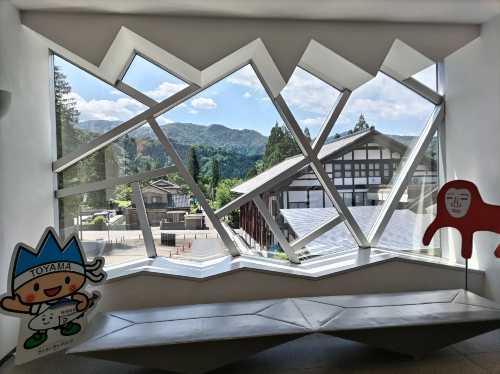App
Customer Support
NZD
Find Bookings
Popular Trip Moments
Kurobe Dam (Kurobe Dam, Toyama) – One of Japan's Largest Dams and a Stunning View. | A 5-day guide to traveling around Japan during the Qingming Festival | See snow in June? The Japanese Snow Walls are open! | [Kurobe Dam] Experience the spectacular water release and magnificent views! | Kurobe Dam Travel Guide
| 7-Day Japan Trip: A Super Detailed Guide, No Regrets | The magnificent snow walls of the Tateyama Kurobe Alpine Route | In addition to cherry blossom viewing, you can also visit this place in April in Japan. | Itinerary 11 Days in Japan | 7-Day Trip to Japan: Your Ultimate Guide | 8-Day In-Depth Tour of Japan - Super Detailed Guide, Take It With You | 8-Day In-Depth Tour of Japan: Experience a Real Hot Spring and Rejuvenate Your Body and Mind | 8-day guide to Japan during winter break | Tateyama Kurobe | The Magnificent Snowy Landscape of the Japanese Alps | Mikuriga-ike Pond | Spring Snow and Magnificence Dance Together: Early Season Experience at Japan's Kurobe Tateyama | Toyama: A Hidden Gem in Central Japan | Toyama, a hidden gem in Japan | Discover Toyama, a hidden gem in central Japan | Toyama, a must-visit destination in central Japan | Tateyama Kurobe Travel Guide | 🇯🇵 “Tateyama Kurobe Alpine Route” | [Tateyama, Toyama Prefecture] A lodging loved by sauna lovers | 8-Day Japan Tour: Don't Miss the Hot Springs! | 8-Day Japan Tour: A Must-See Hot Spring Tour | Tateyama Kurobe Alpine Route | Tateyama Kurobe Alpine Route | Tateyama Kurobe Alpine Route | Tateyama Kurobe Alpine Route
Popular Travel Types
Recommended Attractions at Popular Destinations
Bangkok attraction near me | Manila attraction near me | Tokyo attraction near me | Taipei attraction near me | Hong Kong attraction near me | Seoul attraction near me | Kuala Lumpur attraction near me | Los Angeles attraction near me | Shanghai attraction near me | New York attraction near me | Shenzhen attraction near me | Osaka attraction near me | Singapore attraction near me | London attraction near me | Guangzhou attraction near me | San Francisco attraction near me | Beijing attraction near me | Macau attraction near me | Bali attraction near me | Jakarta attraction near me | Paris attraction near me | Ho Chi Minh City attraction near me | Istanbul attraction near me | Phuket attraction near me | Chicago attraction near me | Seattle attraction near me | Toronto attraction near me | Orlando attraction near me | Cebu attraction near me | Chiang Mai attraction near me
Popular Attractions
Erotika swingers club | Pattaya Floating Market | Meridian Cruise | Shaanxi History Museum | Al Thumama | Xilitu Zhao Temple | Lido Cinema - Borella | Impressions of Lijiang Performance | Tokyo Disneyland | Mingsha Mountain And Crescent Spring | Orana Wildlife Park | Zhangjiajie National Forest Park | Ciqikou | Tiananmen Square | Pingyao Ancient Government Office | Milford Sound Scenic Cruises | Xi’An Holiday Resort | Love In Museum | Queen of hearts | Buddhist Grotto Quest | Random House - Palazzo Marcello | Helena River Park | musola Al Amin | MINDWAYS 3D TrickArt | Palazzo Longo | Center Street Park Pavilion | Masjid Batu | Echigawajuku | Teatro en La Mesa | Cerro El Fraile
Popular Restaurants in Tateyama
Tateyama Soba | Onigiri No Shitaka | Resthouse Shomyo | Tateyama Yoshimine Onsen Green Park Yoshimine | Restaurant Alpine | Kissa Mikuri | Tsurugi | Aoki | Kato Yakisoba | Araya Bozushi | Tabeyo No Moritoyama | Sobadokoro Okina | Patisserie Alpine | Daisangen | Mugino-Ya Naviotateyama | Morino Chaya Kate | Kumujun | Peppermint | Manderin | Soshimbo | Shigenoya | Matsui | Kokoro | Hayashi | Noborizushi | Ikkyu Sushi | Uoyoshi | Yamaju | Kiraku | Sanchan
Popular Ranked Lists
Top 3 Local Restaurants in Huixian | Top 8 Local Restaurants in Fujikawaguchiko | Top 20 Local Restaurants in Zurich | Top 8 Best Things to Do in Aksu Prefecture | Top 9 Best Things to Do in Liangshan Prefecture | Top 10 Local Restaurants in Ordos | Top 10 Best Things to Do in Rongcheng | Top 19 Local Restaurants in Kobe | Popular Luxury Hotels Near Takeo | Top 3 Best Things to Do in Shuozhou | Top 10 Local Restaurants in Hua Hin | Top 4 Best Things to Do in Golmud | Popular Luxury Hotels Near Odiaxere | Top 4 Best Things to Do in Sanjiang | Top 10 Local Restaurants in Guanghan | Popular Luxury Hotels in Brasilito | Popular Best Things to Do in Lvliang | Popular Best Things to Do in Nan'ao | Popular Best Things to Do in Zoige | Top 20 Local Restaurants in San Francisco | Top 4 Best Things to Do in Huidong | Top 19 Local Restaurants in Budapest | Popular Luxury Hotels Near Phuc Yen | Top 6 Local Restaurants in Pingxiang | Top 10 Local Restaurants in Kota Kinabalu | Top 3 Best Things to Do in Ziyang | Popular Best Things to Do in Leye | Popular Best Things to Do in Shannan | Popular Luxury Hotels in Paradise Island | Popular Luxury Hotels Near Sandakan Division
Payment Methods
Our Partners
Copyright © 2025 Trip.com Travel Singapore Pte. Ltd. All rights reserved
Site Operator: Trip.com Travel Singapore Pte. Ltd.
Site Operator: Trip.com Travel Singapore Pte. Ltd.





















